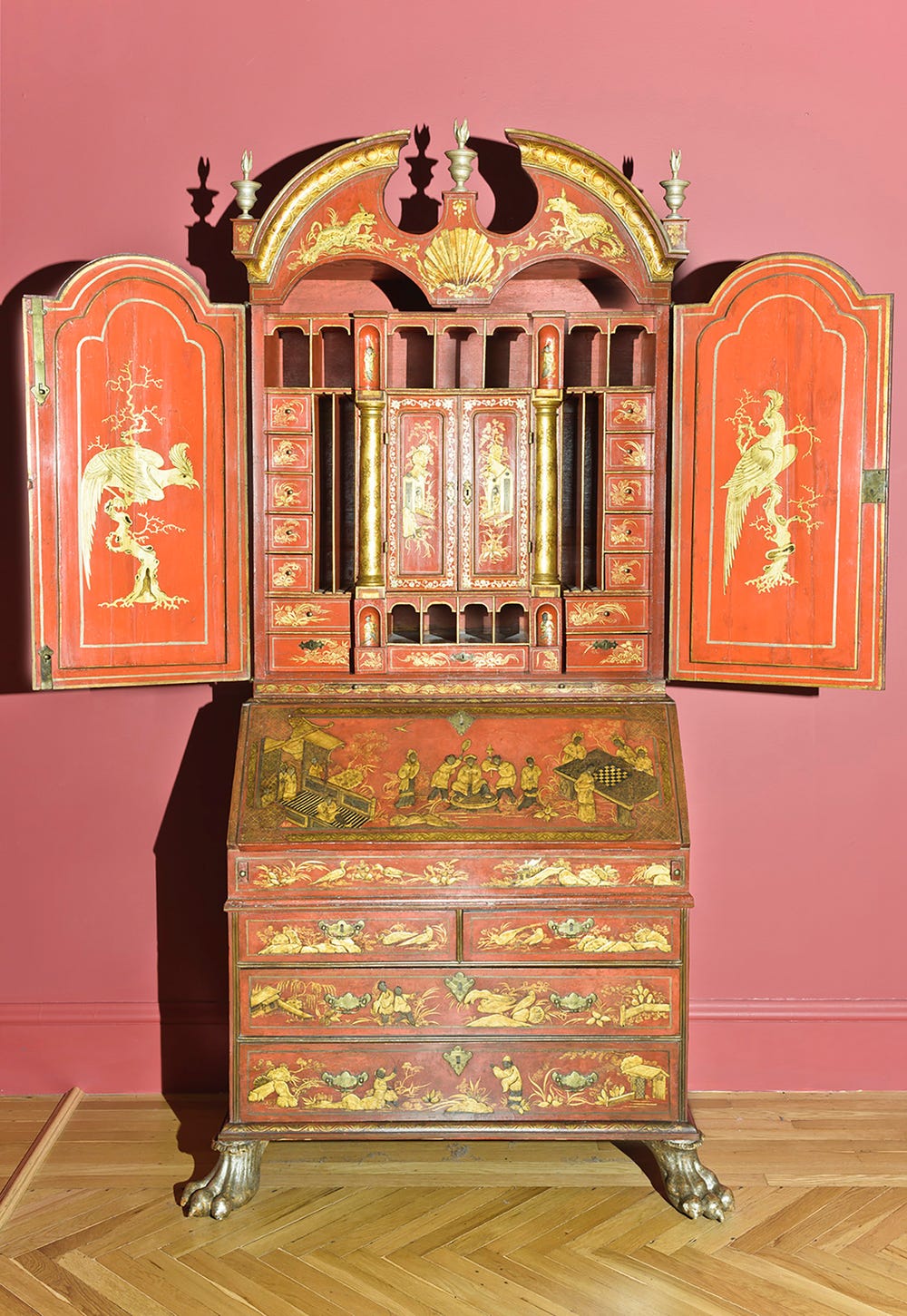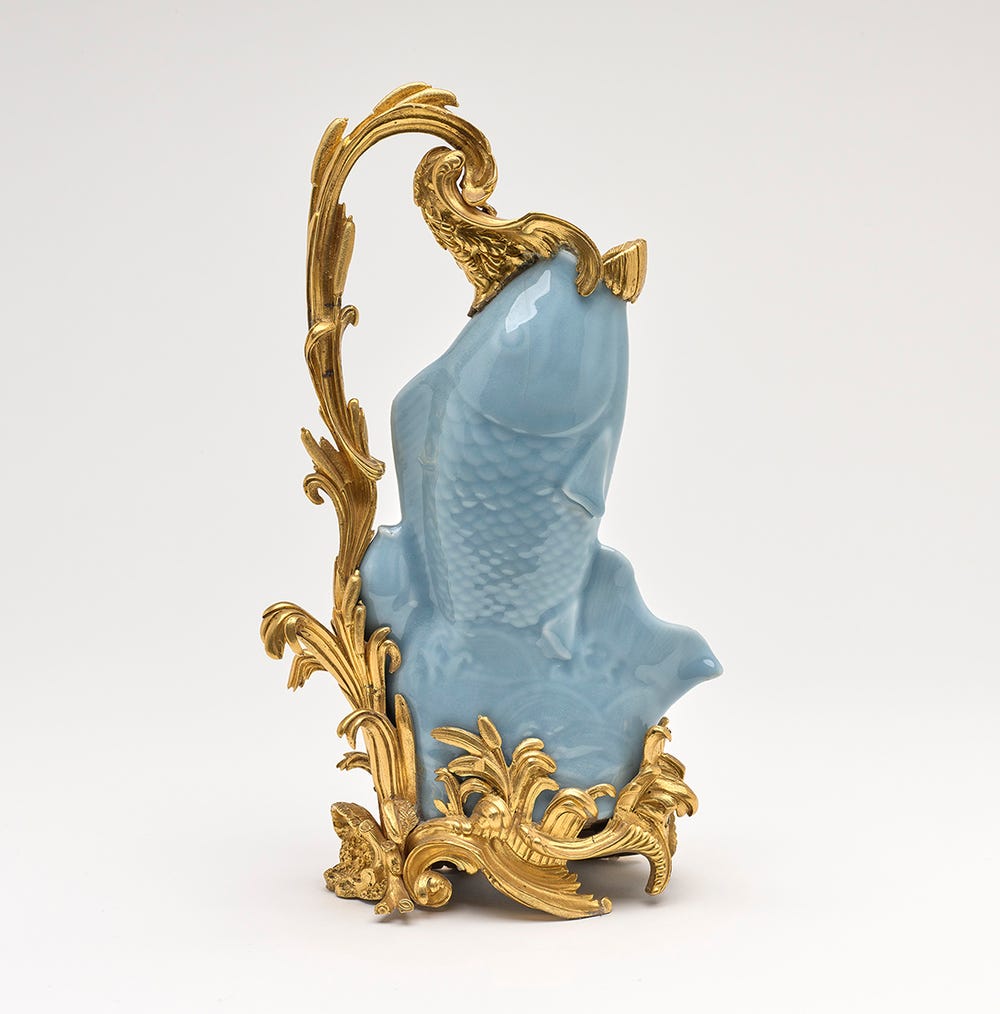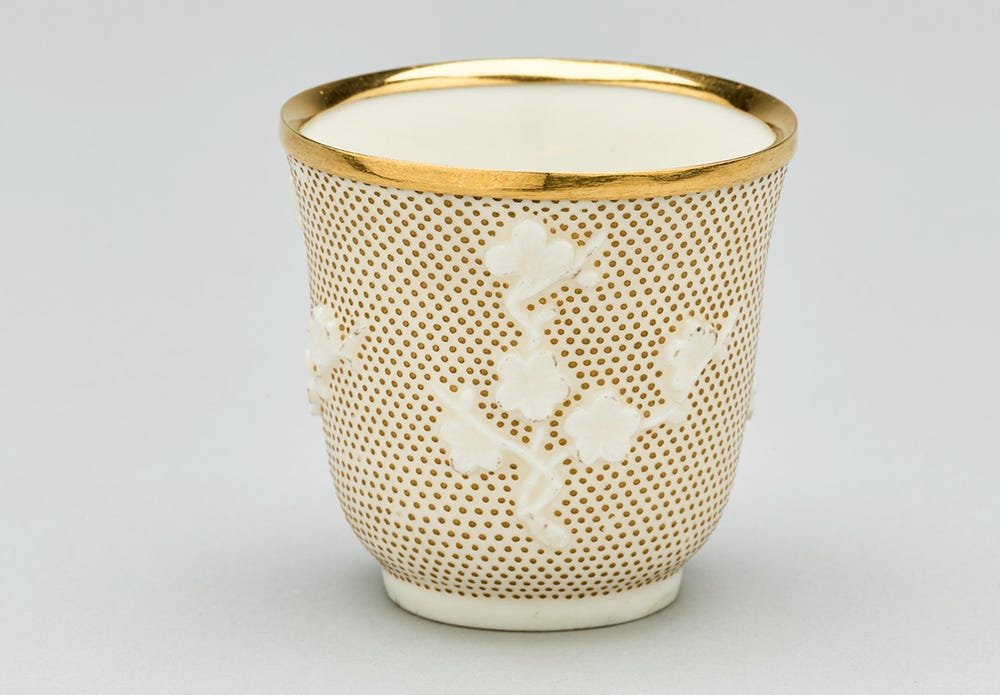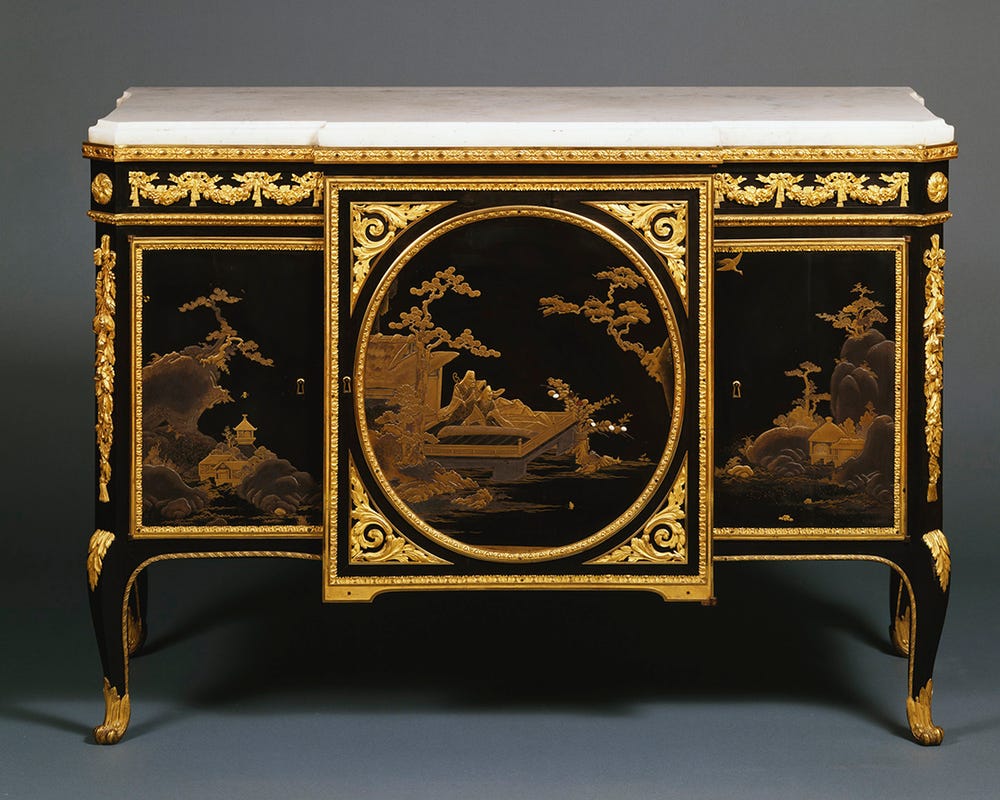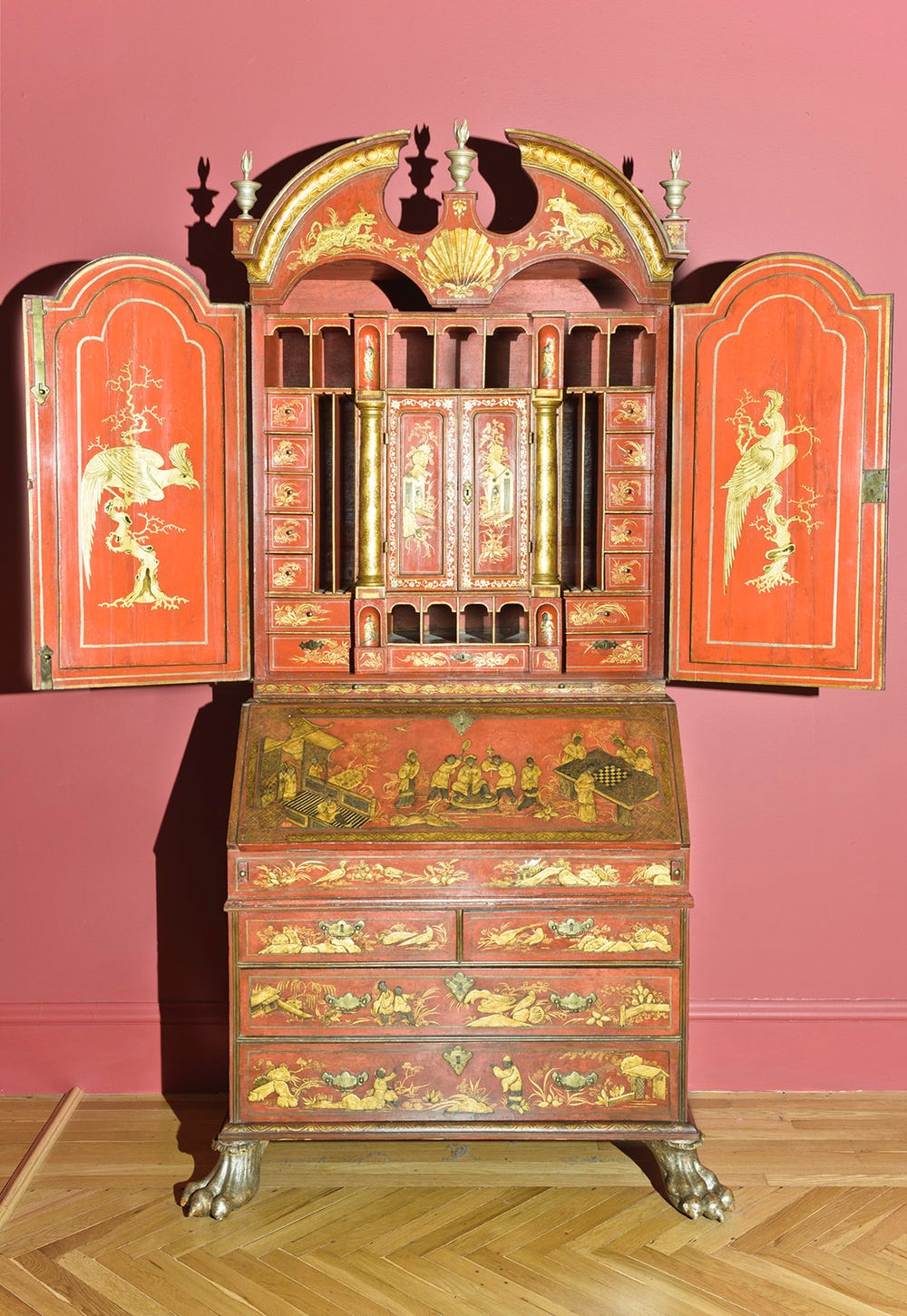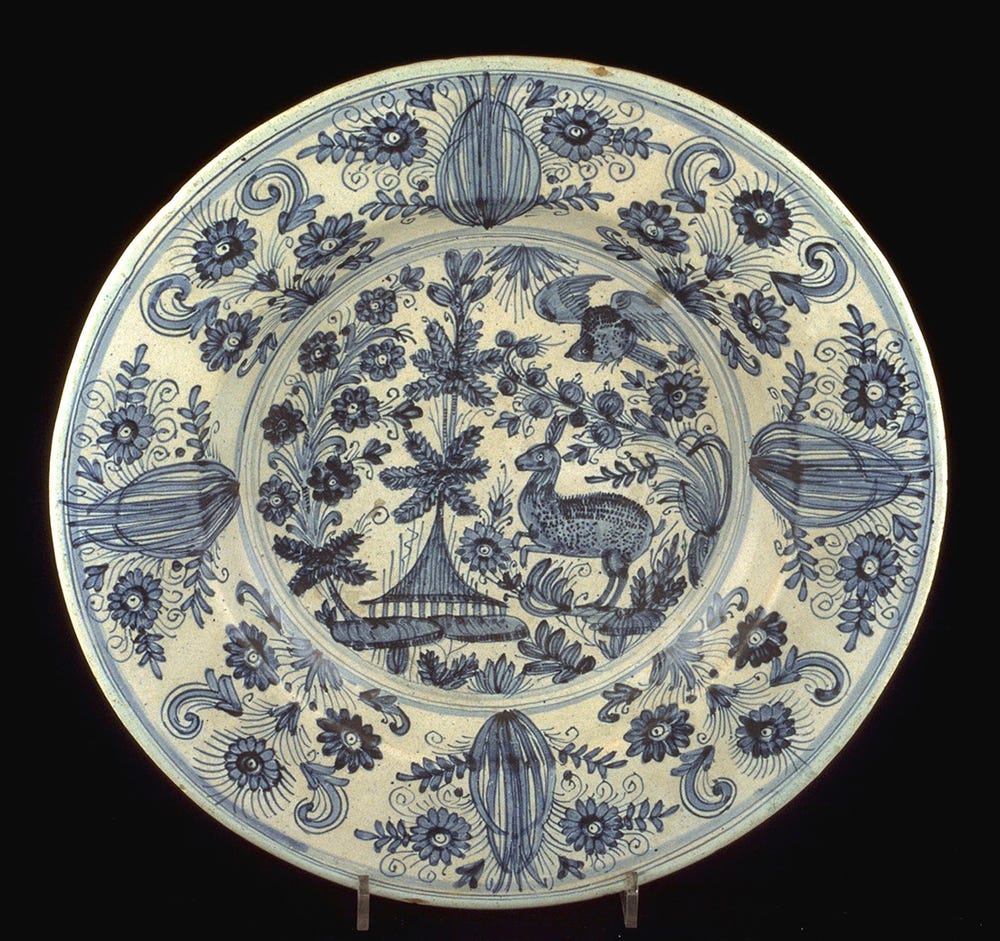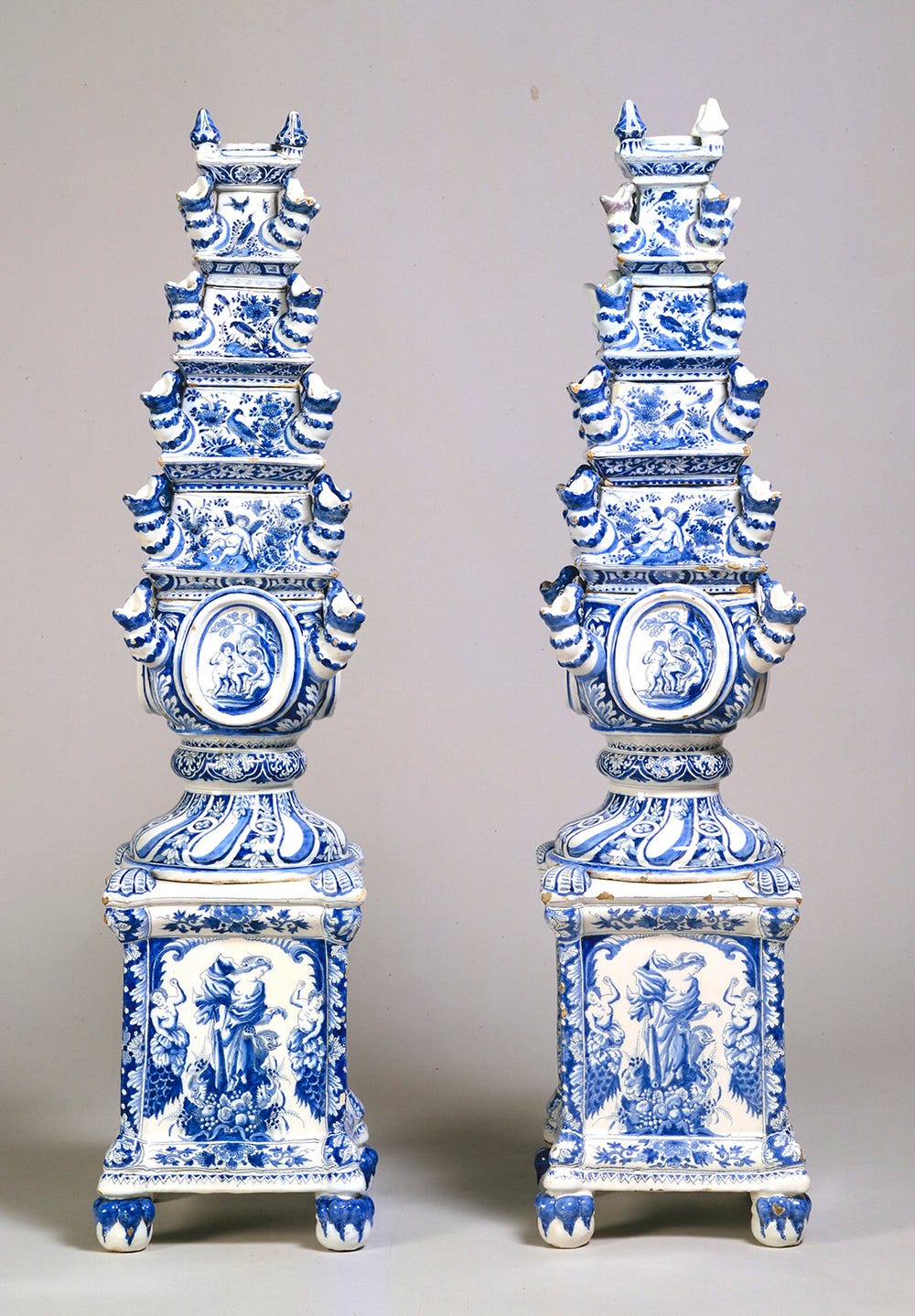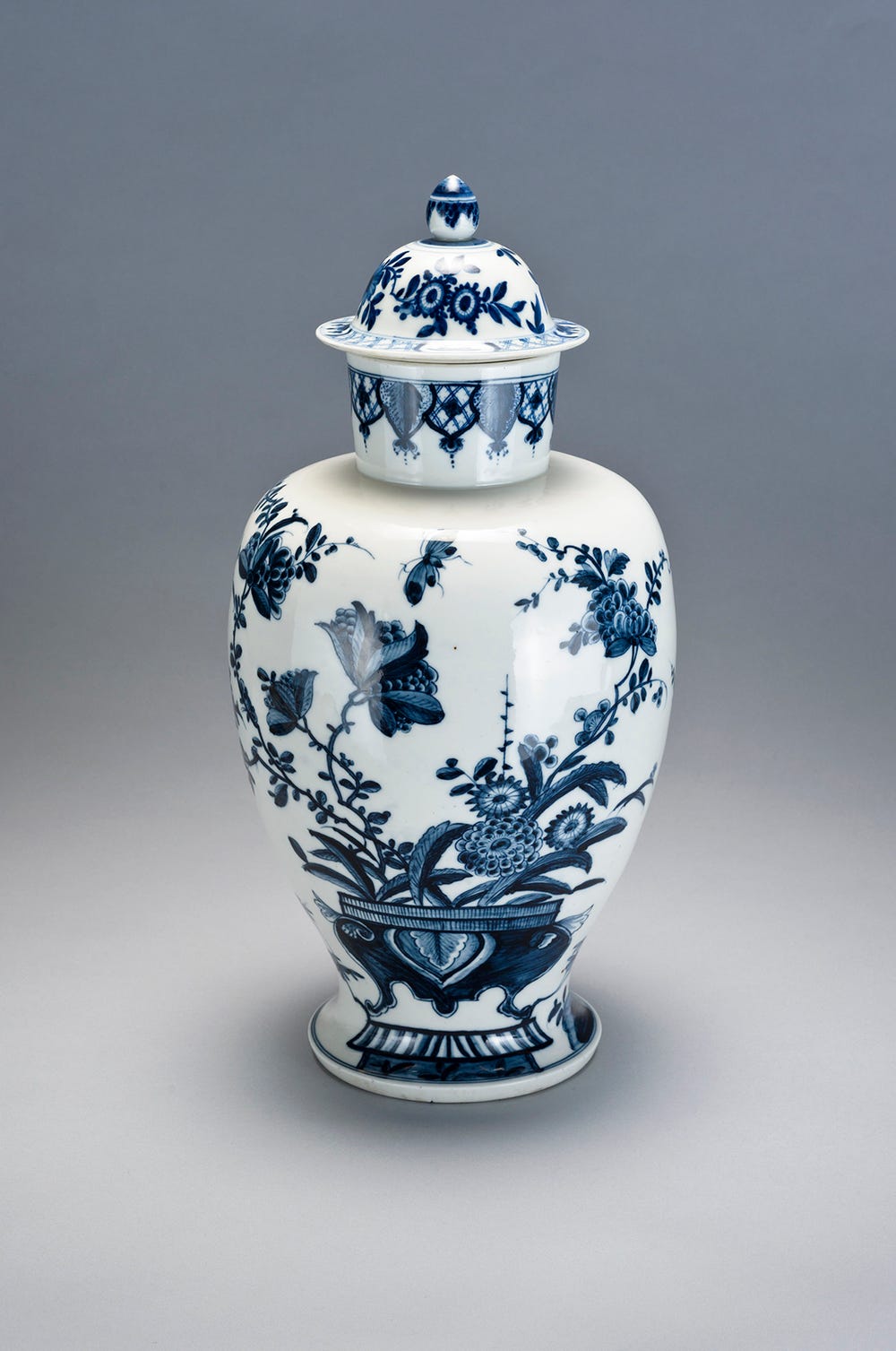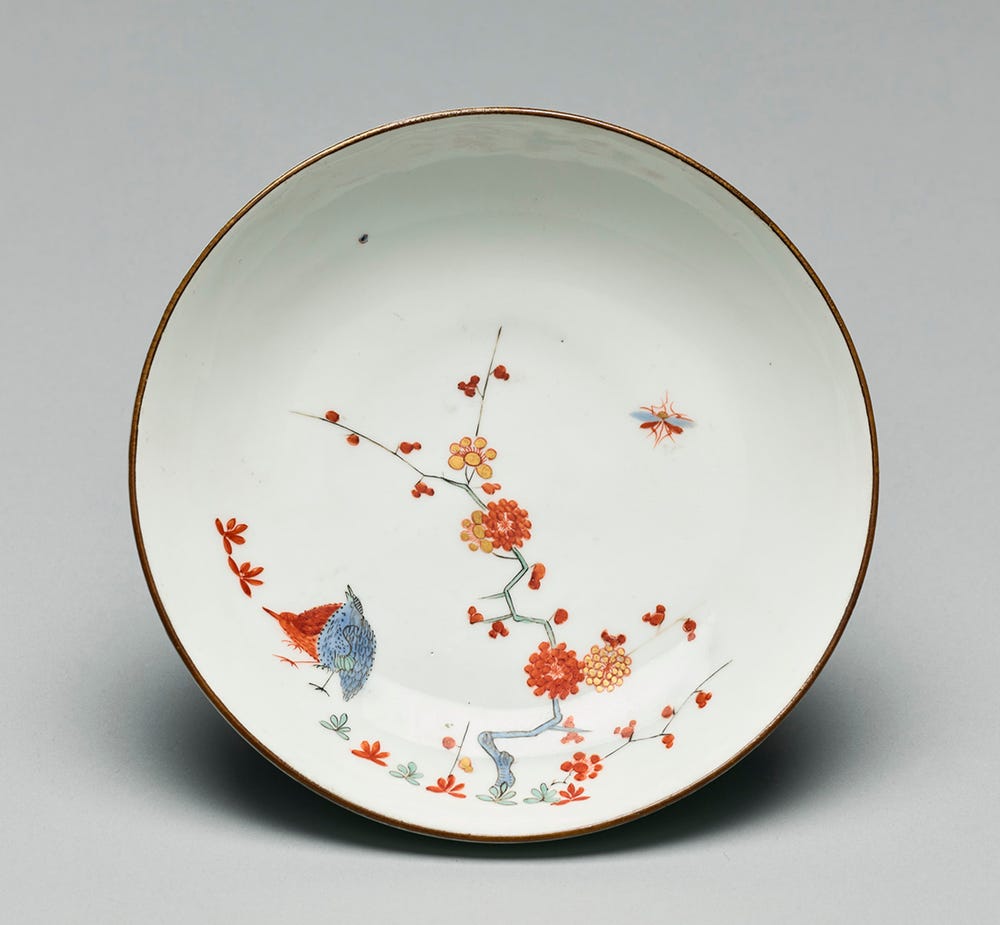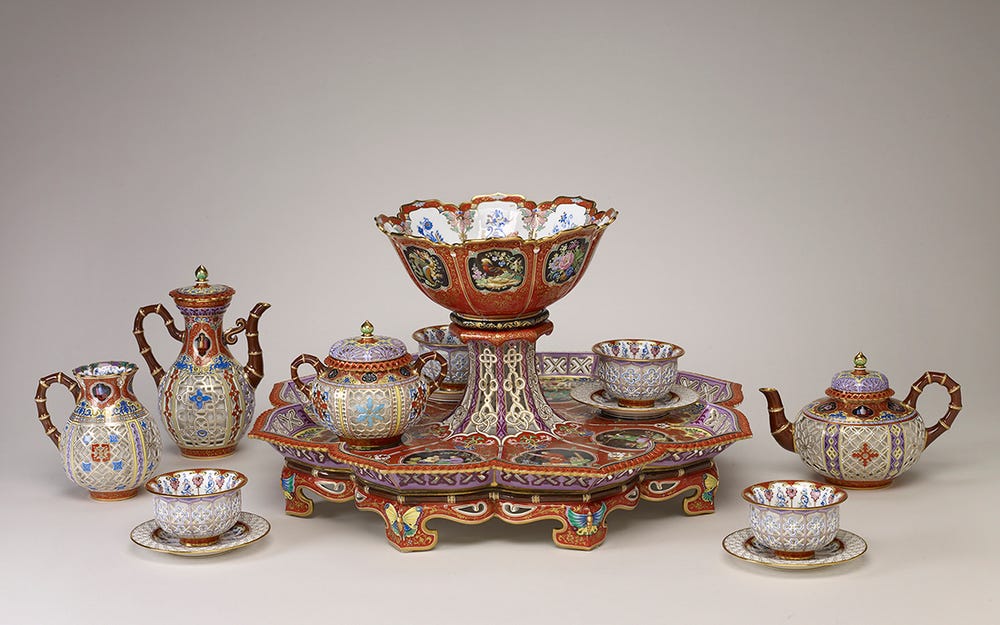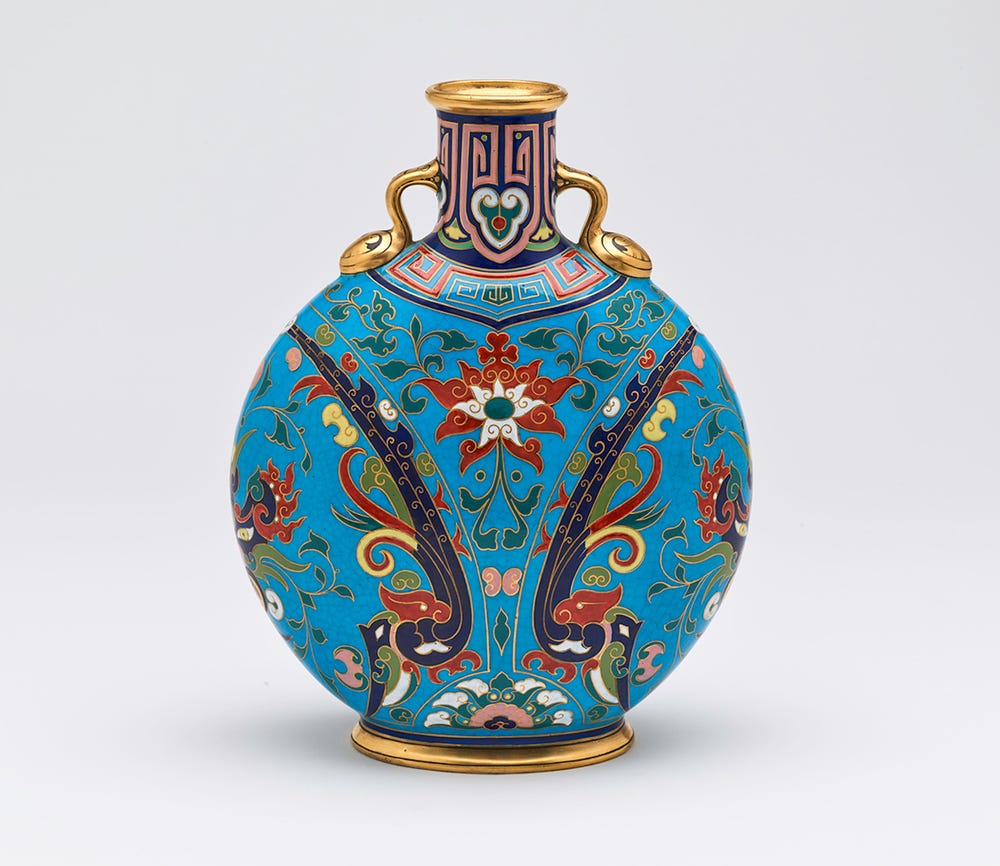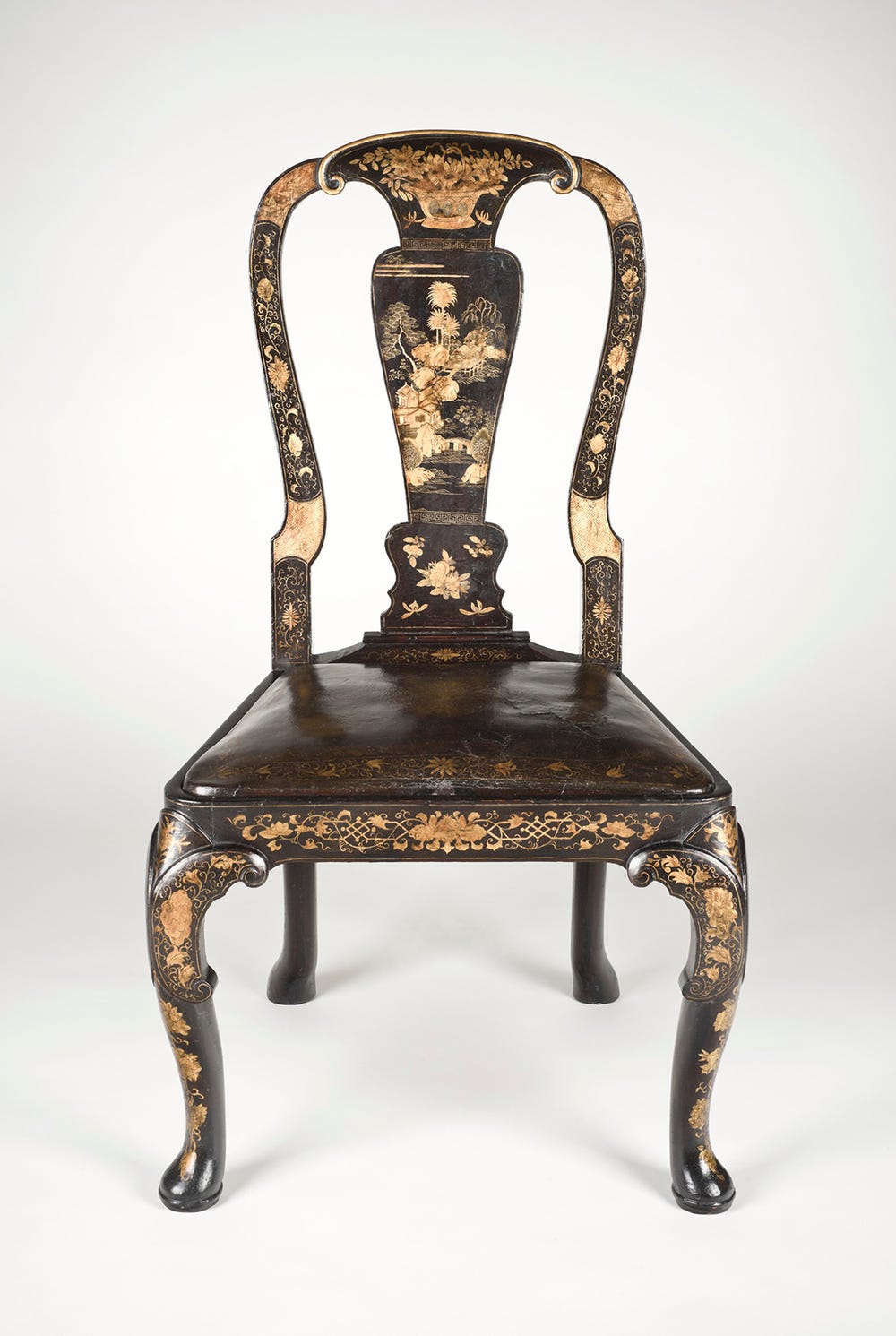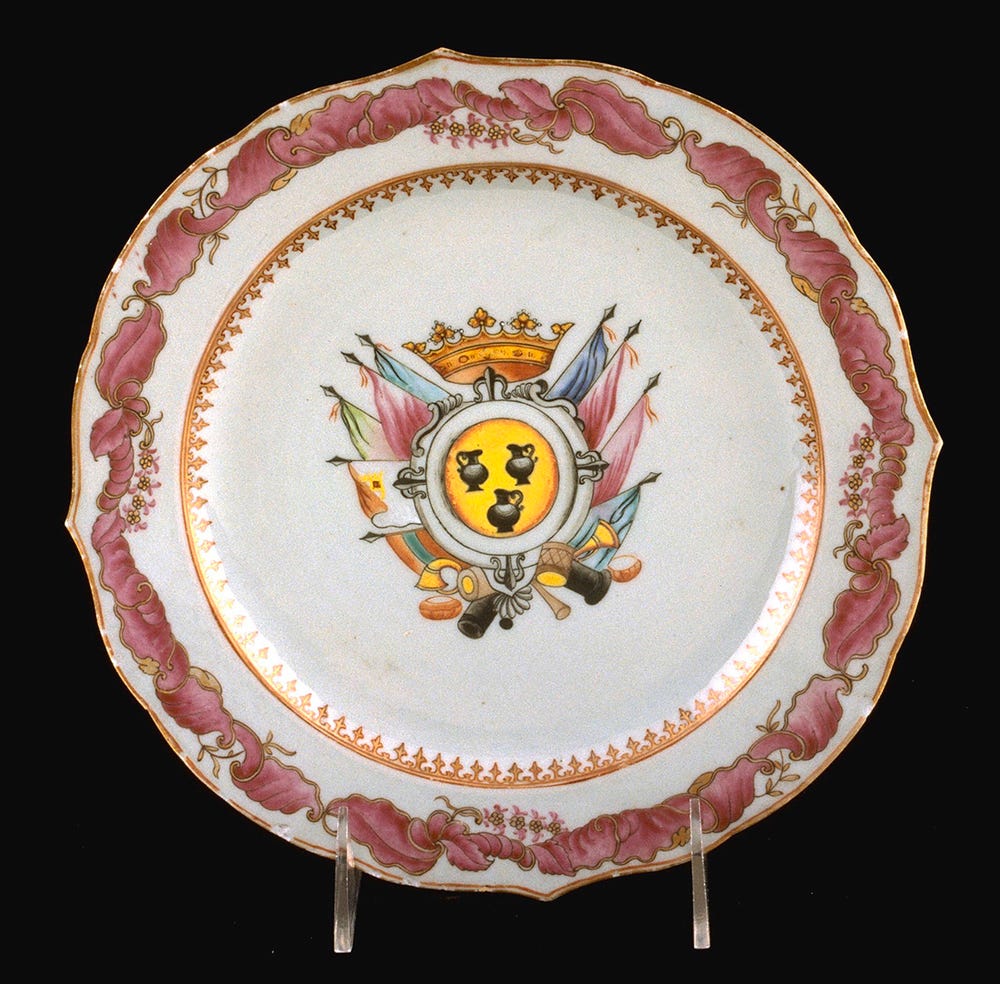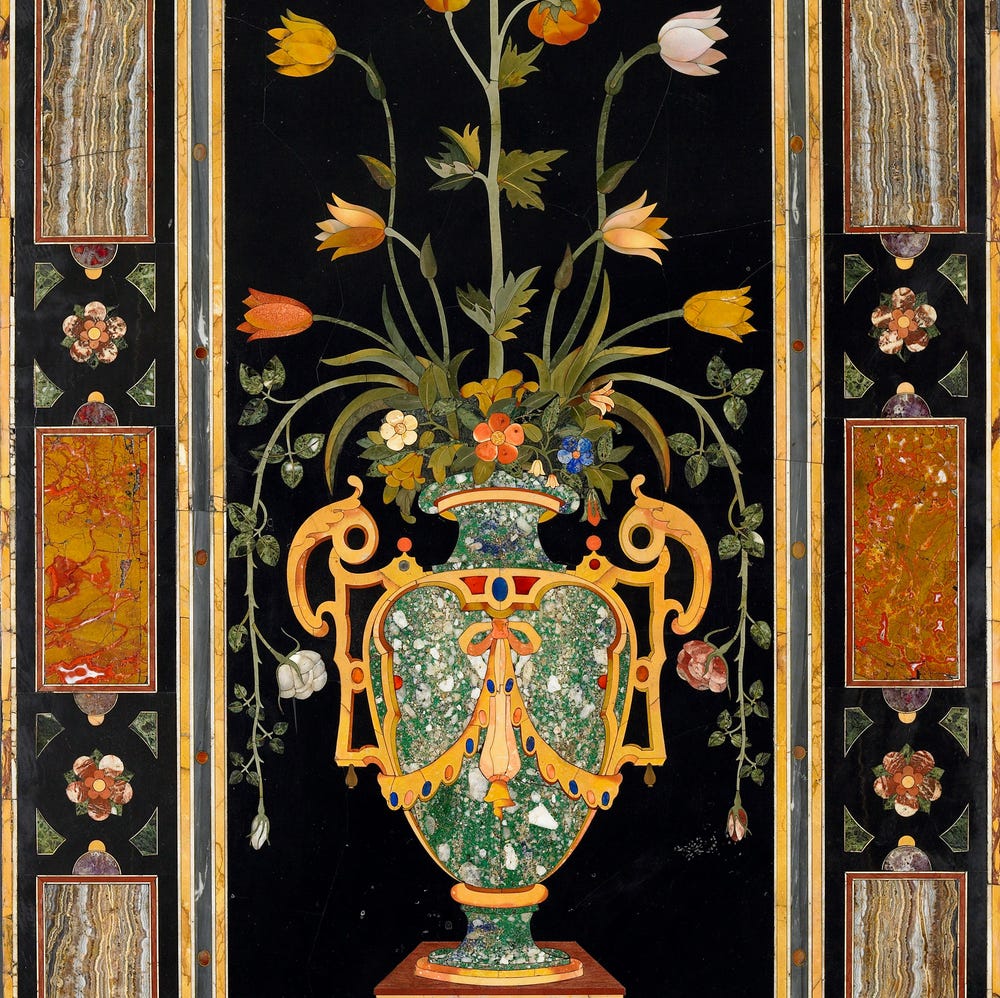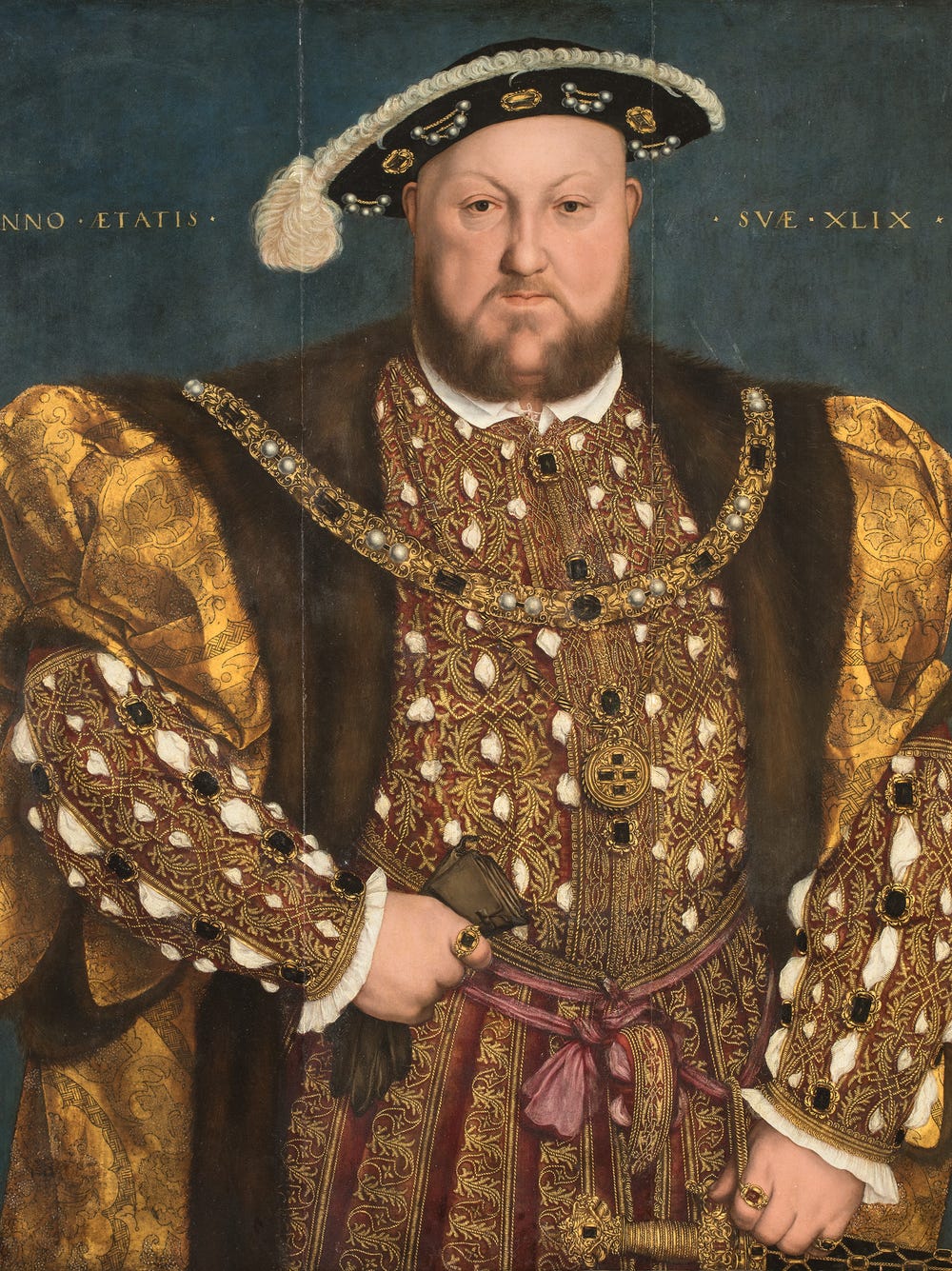East Asian Influences at the Legion of Honor
By Thomas Wu
July 29, 2021
As anti-Asian sentiment, stirred by the coronavirus pandemic, continues to motivate hate crimes against people of Asian descent in the Bay Area and across the country, and as political relations between the United States and China sharply deteriorate, objects in museum collections serve as a reminder of the positive influence that East Asian cultures have had on Western cultures. The Fine Arts Museums of San Francisco do not have a department of Asian art per se, because the city is also home to the Asian Art Museum. Yet while the latter captures the history of Asian art, objects in the European Decorative Arts and Sculpture collection at the Legion of Honor reflect the distinct history of how East Asian art has influenced European decorative arts and interiors.
From the height of the Roman Empire through the late Middle Ages, trade between Europe and China persisted intermittently along the Silk Road. The establishment of maritime routes during the seventeenth century increased trade between Western Europe and East Asia. East Asian exports, such as silk, lacquer, and porcelain, became more widely available in Europe and began to influence European artistic production. Objects at the Legion of Honor that resulted from this exchange can be divided into three broad groups: those incorporating East Asian materials; those inspired by East Asian design, such as chinoiserie furniture and porcelain; and East Asian export wares produced specifically for the European market.
Artworks Incorporating East Asian Materials
Numerous objects at the Legion incorporate materials exported from East Asia. During the seventeenth and eighteenth centuries, East Asian porcelain and lacquer were acquired by Parisian marchands-merciers (retailers), who dominated France’s luxury-goods market. Porcelain was fitted with elaborate gilt-bronze mounts; examples at the Legion include Chinese vessels mounted with French gilt bronze (ca. 1700–1750), as well as a recently acquired pair of Chinese beakers decorated with the piqué d’or technique (ca. 1720), in which gilded points are applied to a surface.
Leaping carp vase France, Paris, ca. 1730-50 'Clair de lune' celadon porcelain and gilt bronze mounts 12 1/2 x 7 x 3 1/4 (31.8 x 17.8 x 8.3 cm) Gift of Archer M. Huntington 1927.165. Photograph by Randy Dodson, © Fine Arts Museums of San Francisco.
Beaker France, Paris, ca. 1720 Chinese Dehua porcelain with gold mounts and piqué d'or decoration 6.8 cm (2 11/16 in.) Museum purchase, Gift of the Golden Gate Collectors 2019.69.1. Photograph by Randy Dodson, © Fine Arts Museums of San Francisco.
Similarly, lacquer was cut into panels to be set into furniture by an ébeniste (cabinetmaker). A commode made by Martin Carlin for Louis XV’s mistress, the Comtesse du Barry (ca. 1773), features panels of coveted Japanese lacquer. Carlin’s ebony veneers and gilded mounts accentuate the lacquer’s gold and black palette. Interpretations of these objects differ. To set exotic materials within rococo or Neoclassical mounts domesticated them, rendering them compatible with European interiors. Alternatively, mounting can be understood as a form of framing porcelain and lacquer as precious works of art.
Commode Martin Carlin, maker France, Paris, ca. 1773 Japanese lacquer on oak carcase, ebony veneers, gilt-bronze mounts, and Cararra marble top 33 x 47 x 19 1/2 (83.8 x 119.4 x 49.5 cm) Gift of Archer M. Huntington 1931.145. Photograph by Joseph McDonald, © Fine Arts Museums of San Francisco.
Artworks Inspired by East Asian Design
A second category of objects at the Legion includes those produced in Europe but inspired by East Asian design and materials. During the eighteenth century, China was extolled by such writers as Voltaire as a perfectly ordered paradise to which Europe should aspire. A decorative style called chinoiserie, a loose European interpretation of Chinese design, emerged during the middle of the century, and Europeans began to produce imitation lacquer using a technique called “japanning,” in which layers of resin-based varnish were applied to wood, heat-dried, and polished. A cabinet made in England ca. 1730, finished with japanning and decorated with chinoiserie designs, embodies these trends.
Bureau-cabinet England, ca. 1730 Japanned wood, silvered finials and feet 92 1/2 x 47 1/2 x 27 (235 x 120.7 x 68.6 cm) Museum purchase, Funds from Deaccessioned Objects given by M.H. deYoung, Helene Irwin Fagan Estate, William Randolph Hearst Foundation, Mrs. E.S. Heller, Grace Hamilton Kelham and Lelia Hamilton Lewis in memory of Grace Spreckels Hamilton, Donald McLeod Lewis, Mr. and Mrs. E. John Magnin, Mr. and Mrs. Robert A. Magowan, Roscoe and Margaret Oakes Collection, Alma de Bretteville Spreckels, Betty Walter Sirigo and various donors 1991.80a-b. Photograph by Randy Dodson, © Fine Arts Museums of San Francisco.
Porcelain
Imports of Chinese and, more rarely, Japanese porcelain into Europe increased significantly during the seventeenth century, but the making of porcelain remained a mystery to European ceramicists. Early attempts resulted in colorful majolica in Italy and Spain, an example of which is a salver dish produced in the Italian city of Savona (Image 5, 1997.95.11), as well as blue-and-white Delftware produced in the Netherlands. An outstanding example of the latter is a pair of tulipières, or tulip vases (ca. 1690) (Image 6, 55.9.1a-f). Although these tin-glazed ceramics, or faïence, lacked the delicacy and translucency of true porcelain, they were often decorated to resemble Chinese blue-and-white wares.
Salver Italy, Savona, early 17th century Tin-glazed earthenware (majolica) 2 1/4 x 11 3/4 (5.7 x 29.8 cm) Gift of Dr. James H. Inglis 1997.95.11. © Fine Arts Museums of San Francisco.
Tulip vase (tulipière) Adriaenus Koeks, maker De Grieksche A Factory, manufacturer Netherlands, Delft, ca. 1690 Tin-glazed earthenware 39 3/4 x 9 1/2 x 9 1/2 (101 x 24.1 x 24.1 cm) Bequest of Frances Adler Elkins 55.9.1a-f. © Fine Arts Museums of San Francisco.
During the eighteenth century, manufactories from England to Russia competed to produce true ‘hard-paste’ porcelain. The Meissen Factory in Germany (est. 1710) was the first to succeed and many of its early wares were heavily inspired by East Asian precedents. A baluster vase (ca. 1725–1730) was painted by Johann Caspar Ripp (Dutch, 1681–1726) to resemble Chinese blue-and-white vases. The decoration of a Meissen tea bowl and saucer (ca. 1730–1735) was inspired by Japanese Kakiemon wares, characterized by delicate floral motifs painted in translucent red, blue, and green pigments. Other European manufactories, though they lacked the key ingredient of kaolin clay, similarly imitated East Asian wares in soft-paste porcelain or faïence.
Baluster vase and cover with AR monogram Meissen Factory, manufacturer Johannes Caspar Ripp, decorator (attr.) Germany, Meissen, ca. 1725-30 Hard-paste porcelain with underglaze blue decoration 41.3 x 21.5 cm (16 1/4 x 8 7/16 in.) Gift of Malcolm D. Gutter 2015.66a-b. Photograph by Randy Dodson, © Fine Arts Museums of San Francisco.
Teabowl and saucer Meissen Factory, manufacturer Germany, Meissen, ca. 1730-35 Hard-paste porcelain 3 1/8 x 5 in (7.9 x 12.7 cm) Gift of the Arnhold Foundation in Honor of Henry H. Arnhold 2019.58.3a-b. Photograph by Randy Dodson, © Fine Arts Museums of San Francisco.
By the late eighteenth century, European porcelain was adapted to the more distinctly Western rococo and Neoclassical styles, but East Asian influence persisted into the nineteenth century. An elaborate déjeuner chinois réticulé (reticulated Chinese breakfast service), produced at the French Sèvres Manufactory ca. 1839–1842, incorporates a number of distinct Chinese porcelain styles. Each component of the service consists of a reticulated (see-through) outer layer enclosing an impermeable inner layer. Yacinthe Régnier, who designed the service, likely studied reticulated wares displayed at a large sale of Chinese art in Paris in 1826. Porcelain factories drew inspiration from other Asian materials as well: A “pilgrim flask” produced by the Mintons Factory in England, ca. 1872, closely resembles Chinese cloisonné enamel. Close observation of examples was needed to produce these objects, demonstrating more serious academic interest in Chinese art during the nineteenth century.
Breakfast service (Déjeuner chinois réticulé) Sèvres Factory, manufacturer Pierre Huard, artist Yacinthe Régnier, designer France, ca. 1839–1842 Porcelain with enamel and gilded decoration 27.3 x 50.2 x 50.2 cm (10 3/4 x 19 3/4 x 19 3/4 in.) Museum purchase, European Art Trust Fund, K. Hart Smith Bequest, Ruth L. and Alfred B. Koch Trust, Hildegard Seidel Bequest, European Decorative Arts Council, San Francisco Ceramic Circle, Various Tribute Funds, Mrs. Clarence Sterling Postley, Funds in memory of Nini Tobin Martin, Loretta Beckman-Carr Bequest and Fine Arts Museums Foundation Auction Proceeds 2009.11.1-10. © Fine Arts Museums of San Francisco.
Pilgrim flask Minton & Company, manufacturer Léon Arnoux, designer Great Britain, 1874 Bone china with overglaze enamels and gilding over a block printed transfer outline 10 5/8 x 9 1/16 x 3 9/16 in. Gift of Jeffrey Ruda and Leonard Whitney 2019.67.1. Photograph by Randy Dodson, © Fine Arts Museums of San Francisco.
East Asian Export Wares Produced for the European Market
A third group of objects at the Legion includes works produced in China specifically for European markets. As Western demand for East Asian exports increased during the seventeenth and eighteenth centuries, Chinese craftspeople began to anticipate European tastes and produce wares that matched Western ideals of Chinese art more closely than Chinese art itself, or they produced wares in Western styles. A notable example in the collection is a lacquer side chair, made ca. 1725 for the English market. Although not currently on display, Chinese export porcelain dinner services are also part of the Legion’s collection. One service, produced for Italian consumers ca. 1780, displays a coat-of-arms motif against a white ground. While the Chinese rarely used such Western-style export wares themselves, these objects confirm that stylistic exchange between Europe and East Asia was mutual to some degree and that European design influenced Chinese artistic production, if not consumption.
Side chair with drop-in seat China, ca. 1725 Lacquer, leather and wood 39 1/2 x 22 1/2 (100.3 x 57.2 cm) Museum purchase, Charles E. Merrill Trust Fund 78.91. Photograph by Randy Dodson, © Fine Arts Museums of San Francisco.
Dinner plate from a service China, ca. 1780 Porcelain 23.2 x 23.2 x 2.5 cm (9 1/8 x 9 1/8 x 1 in.) Gift of Mrs. J. Hampton Barnes 1982.75.25. © Fine Arts Museums of San Francisco.
A Positive Legacy
Valuable lessons can be gleaned from East Asian–inspired objects at the Legion of Honor and other museums. Since the Covid-19 pandemic began, thousands of hate crimes against people of East and Southeast Asian appearance have occurred in American cities, ranging from verbal harassment to violent assault. Despite the Bay Area’s reputation for tolerance, it has been a hot spot of such incidents. At the same time, relations between the United States and China have worsened dramatically over grave political, economic, and human-rights issues, and it is clear that relations between China and the United States are more adversarial than cooperative. Americans of Chinese descent may particularly feel the impact of this shift.
Art museums have an opportunity to display the best of different cultures in a positive light. Nineteenth-century chinoiserie objects, such as the Sèvres déjeuner and Mintons pilgrim flask, were notably produced at a time when European powers increasingly dominated China, engaging in conflicts such as the Opium Wars (1839–1842; 1856–1860) and carving out spheres of economic influence. Yet the déjeuner and flask demonstrate that, despite political enmity, Europeans were able to appreciate Chinese culture. It is hoped that the history and objects described in this article will give readers—and visitors to the Legion of Honor, including those of Asian descent—a stronger understanding of how East Asian art influenced European decorative arts in both material and design, and that this influence made a positive and valued contribution to Western culture.
Text by Thomas Wu, curatorial assistant, European Decorative Arts and Sculpture.
Learn about the European Decorative Arts and Sculpture collections at the Legion of Honor.
